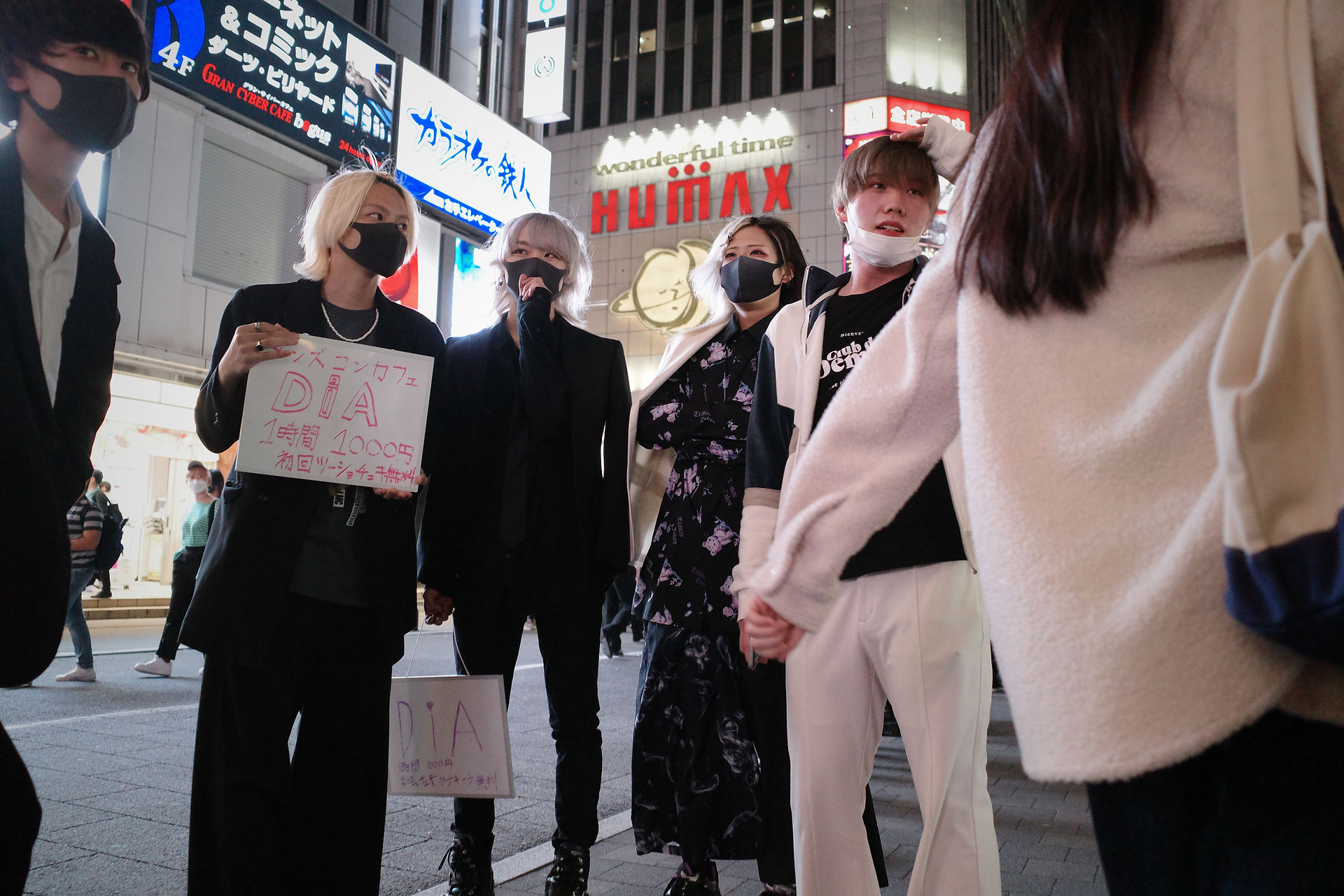
Introduction
by Nanami
Hearing the word Kabuki-cho, known as one of the most famous nightlife districts in Japan, people associate it with typical dangers such as adult entertainments, host/hostess clubs, love hotels, and brothels. It is not entirely off the mark. What people feel threatening may not actually be nightlife businesses but the people who solicit them to enter the shady world. This idea comes from confirmed fact, that is Kabuki-cho's strong connections with industry.
As the night progresses, Kabuki-cho comes alive. This is the reason why Kabuki-cho is called "the town that never sleeps". In other words, as well as nightlife business, the public guidance which lure people to industry garners momentum at night.

This website will call the public guidance "scouts''. Scouts usually refers to "a person whose job is to find people who are good at singing, acting, sport, etc. in order to give them work" (Oxford Dictionary). However, in the context of Kabuki-cho, scouts refers to a person who picks out people who possibly engage in related businesses at Kabuki-cho.
According to Takeoka, thanks to scouts' astute strategies as a public guidance, Kabuki-cho economy reaps a bumper profits (2013).

Shinjuku Swan
Media Representation of Scouts in Japan

Tatsuhiko Shiratori (middle) is at the bottom of his life in Kabuki-cho, a major entertainment district, when a change encounter leads him into the world of scouting. In the underworld of desire and ambition, Shiratori is caught up in the fierce competition among scouts, but he also has a fateful encounter with a certain target and grows as a person. Shinjuku Swan is a film that depics the underworld of Kabuki-cho and the underworld that swirls around it from a scout’s point of view, based on the author’s experience. This film illustrates the community of Kabuki-cho as a whole while focusing on scouts guiding girls into the industry and how the guidance is prospering this urban city.
Media Representation of Scouts
Sign Warnings Regarding Scouts
Scouts do not exist only in the underworld, but also in the streets of Kabuki-cho. This poster is a symbol of the danger they face. The police are aware of this. This sign is created by the National Police Agency’s 盛り場総合対策本部 (literal translation: Red-light District General Task Force). This naming suggests that at least some damage has been done. Public guidance—scouts guiding targets into the industry— is rife in the Kabuki-cho area, which is imposing criminal acts that could be obtained for heavy penalties.

Sign warning public about scouts (The Metropolitan Police Department, n.d.)
Photo: Mai Schrock-Manabe
Methodology
MAp
This map below shows the most common places scouts look for and approach women in Kabuki-cho; Moa 2nd Street, Sakura-dori, Hanamichi-dori, Underground of Shinjuku East Exit Station, and Shinjuku Station East Exit Hiroba.
For this research, our research group visited the Kabuki-cho district for a total of 8 times within a span of 17 weeks. The field notes were taken from 2022/06/17 to 07/14. All the information and pictures taken in Kabuki-cho on this website are retrieved from Anthropology Practicum Class database. This page is made under the direction of Professor David Slater.
Purpose
It is interesting to reveal the picture of what attributes to Kabuki-cho economy because scouts are public guidance to private industry; however, it is be vague that how they successfully become a part of and contribute to the prosperity of Kabuki-cho economy. This website will give viewers how scouts as one of the presence of public guidance performs their abilities and correlates with Kabuki-cho economy. Analyzing their tactical strategies, it allows us to understand how they become an important figure within Kabuki-cho.
